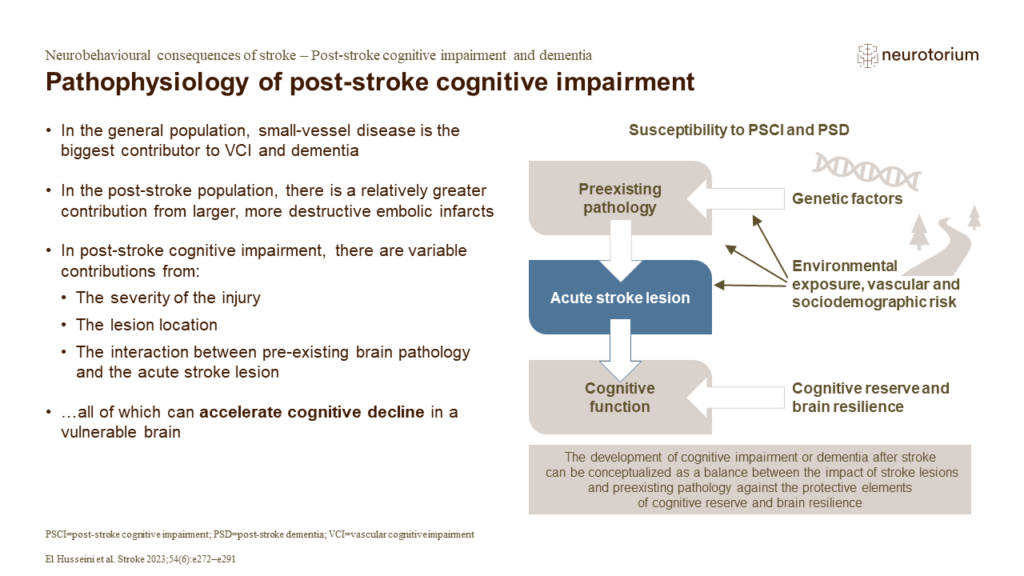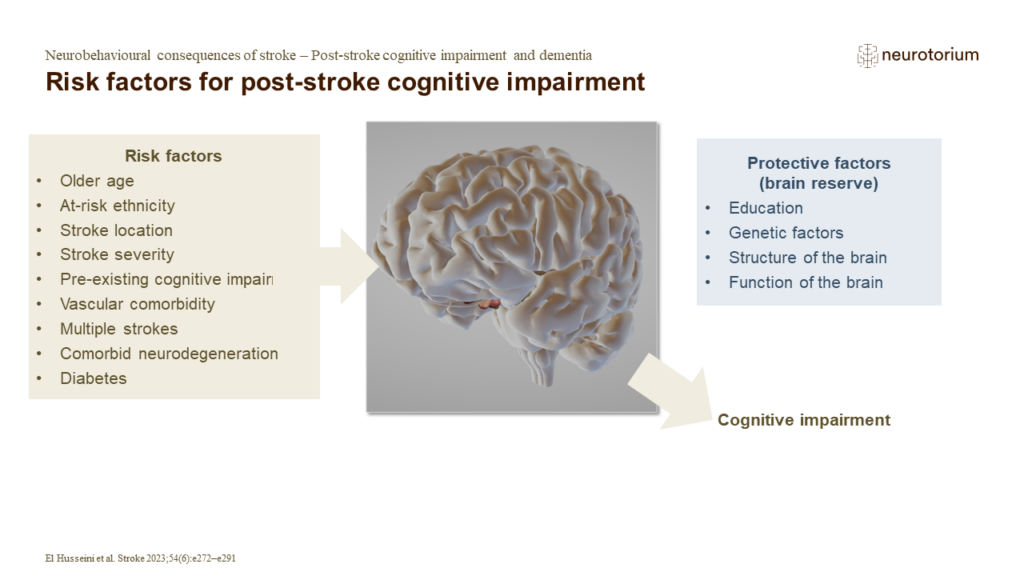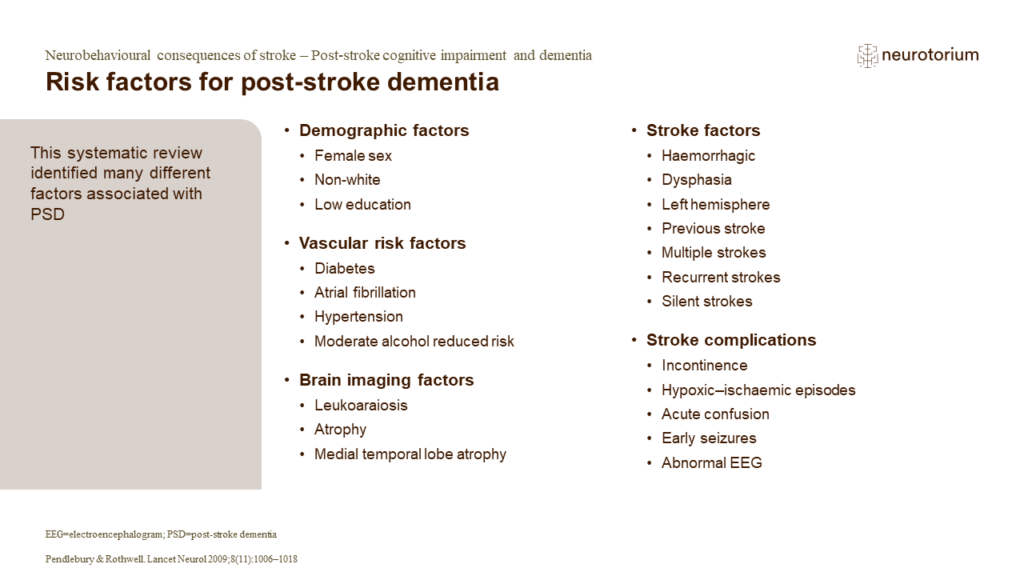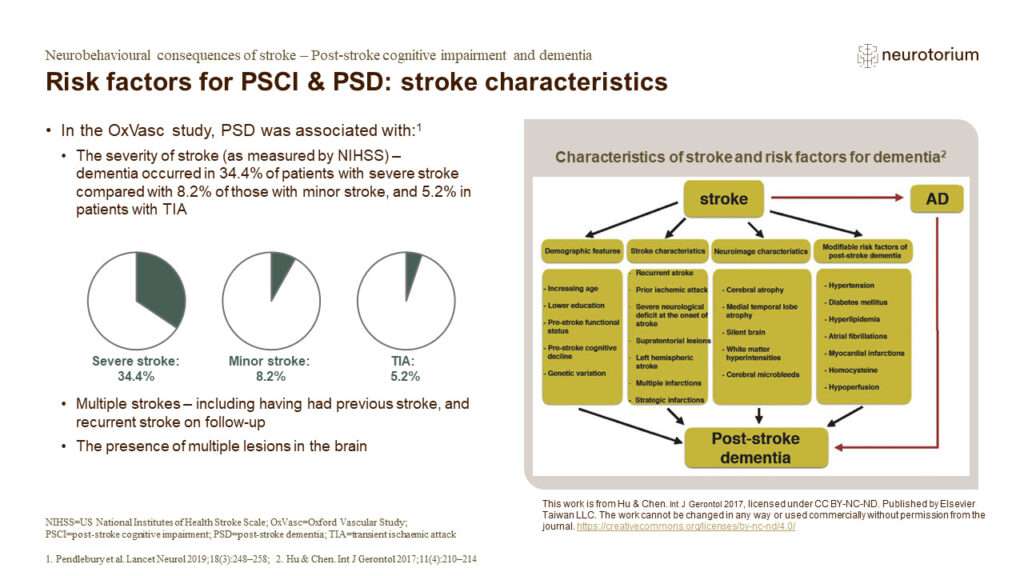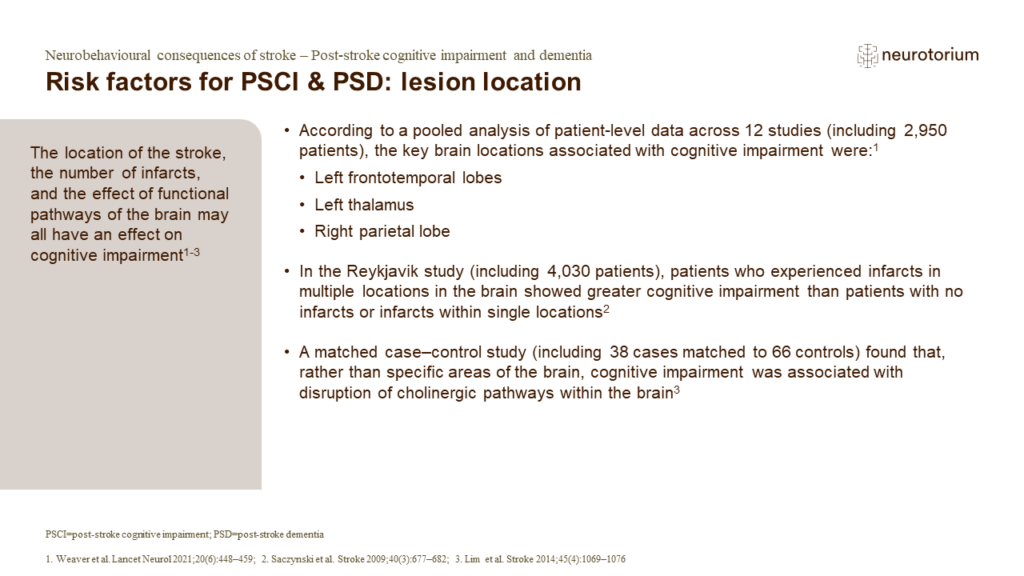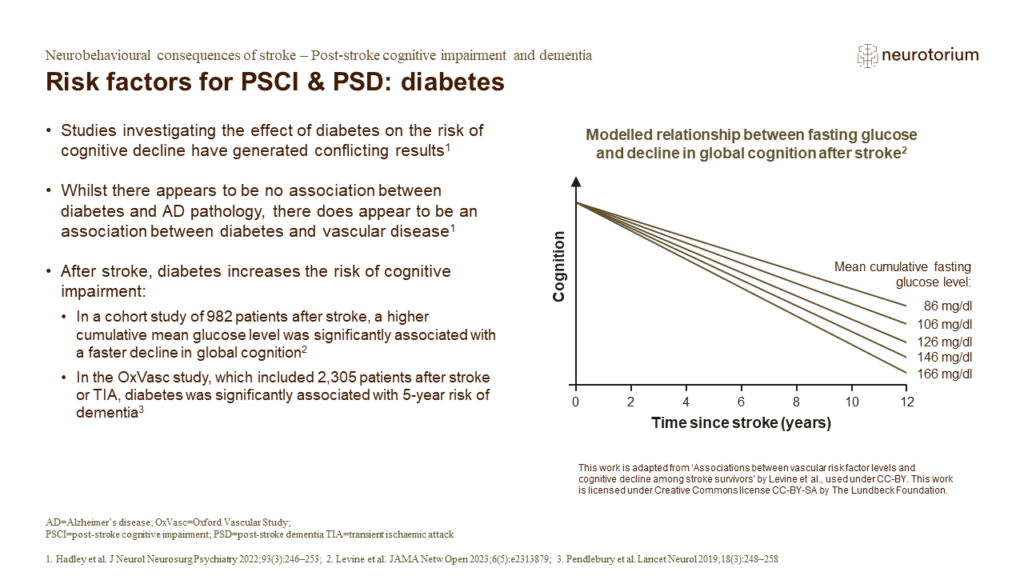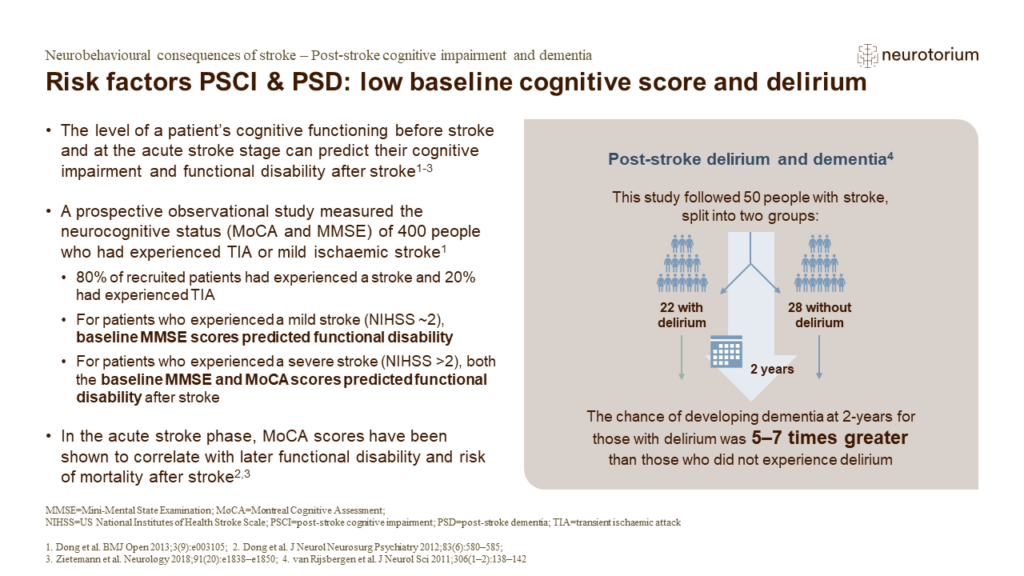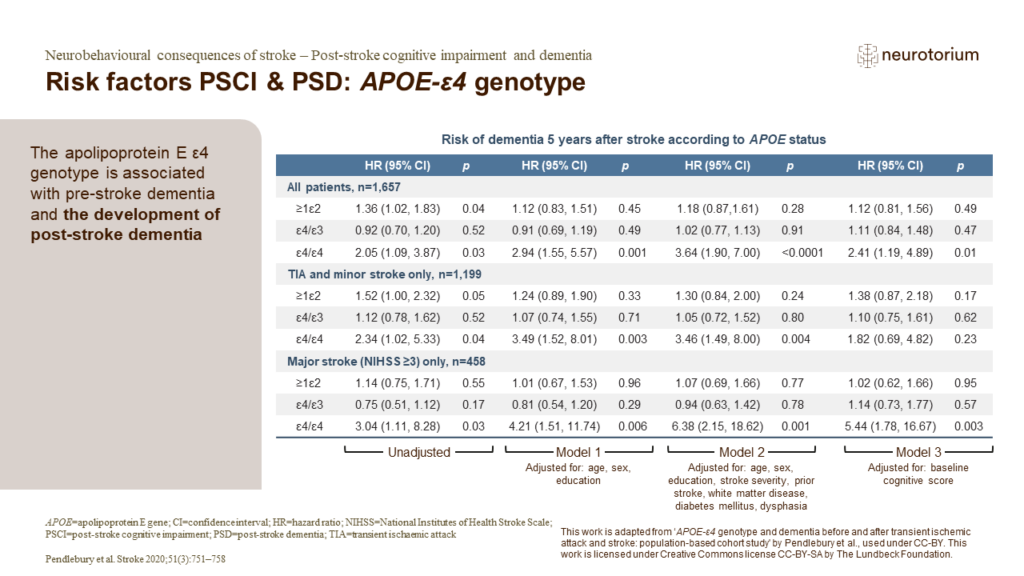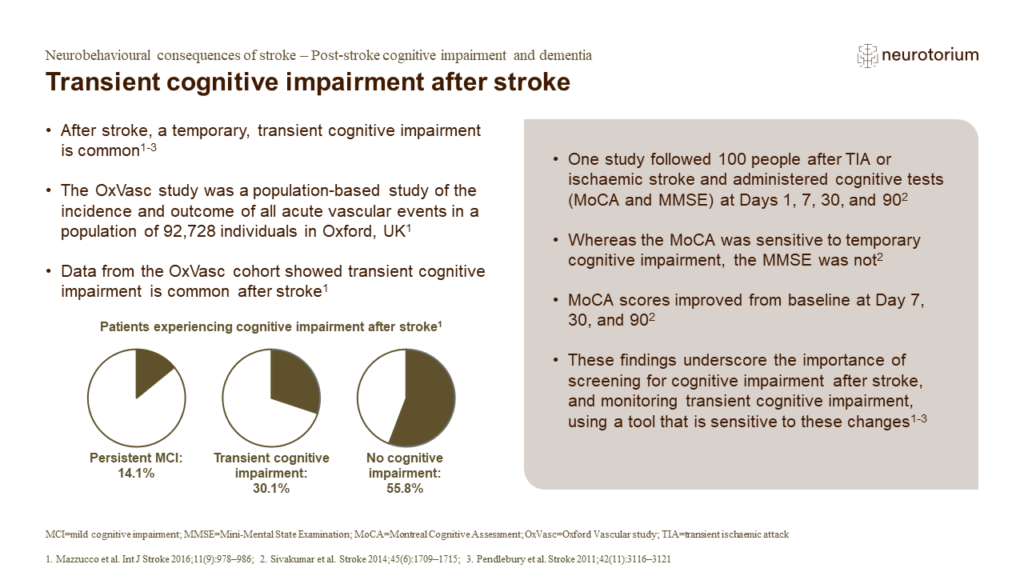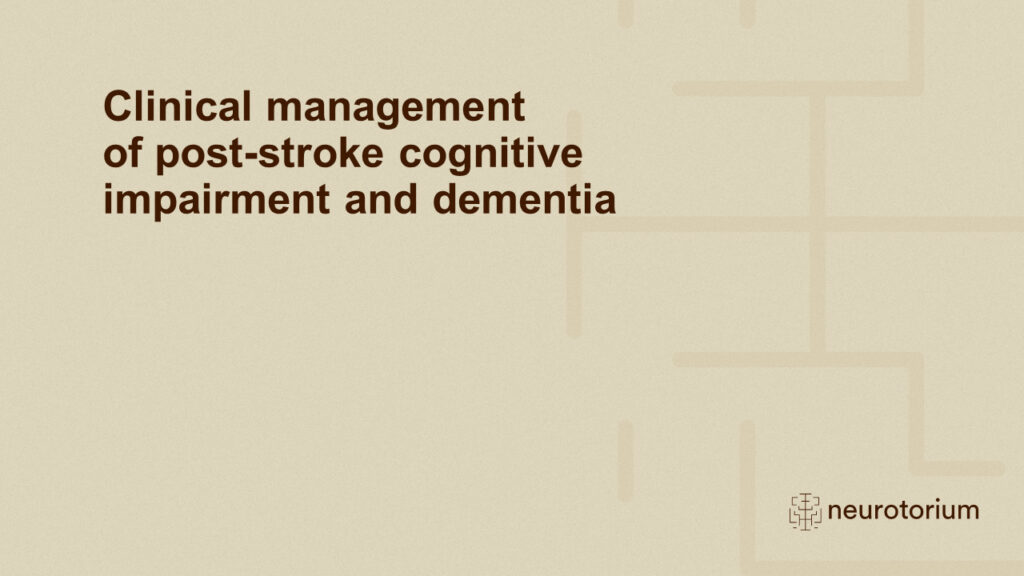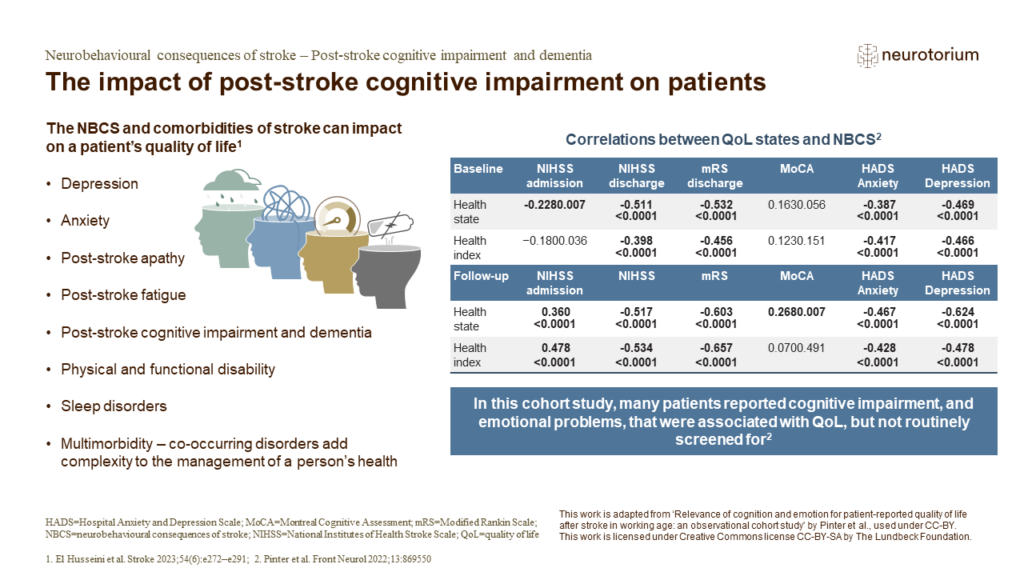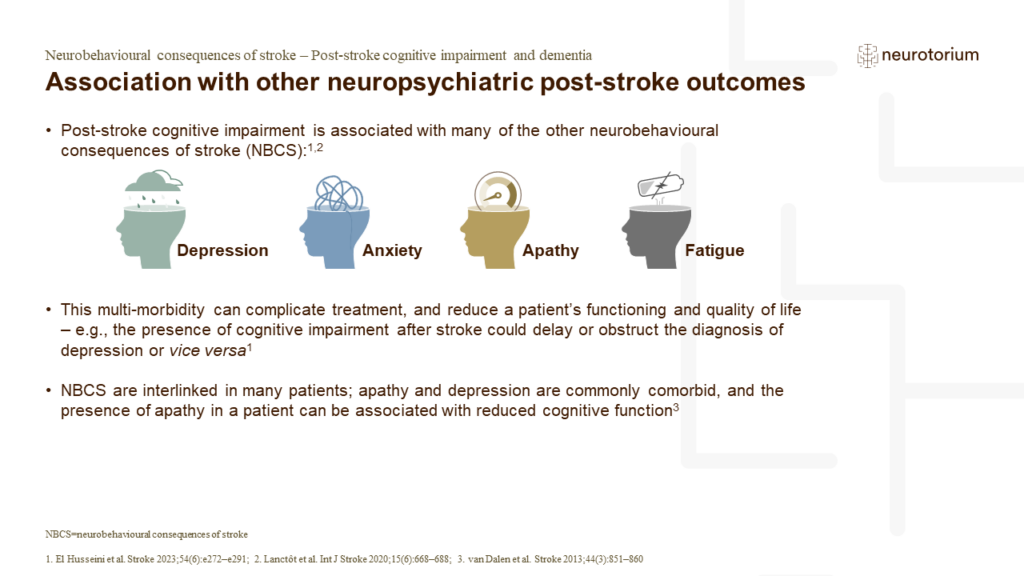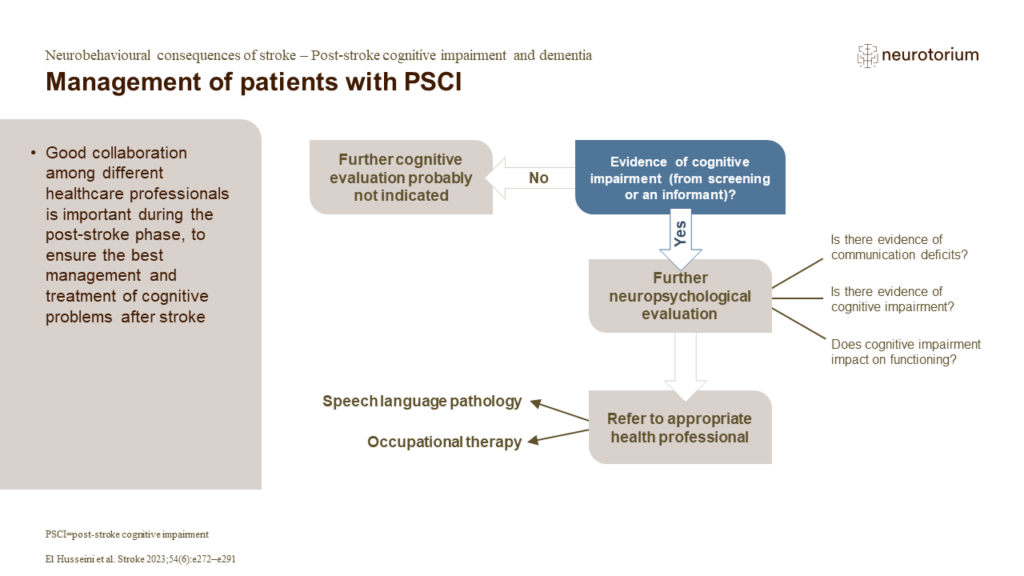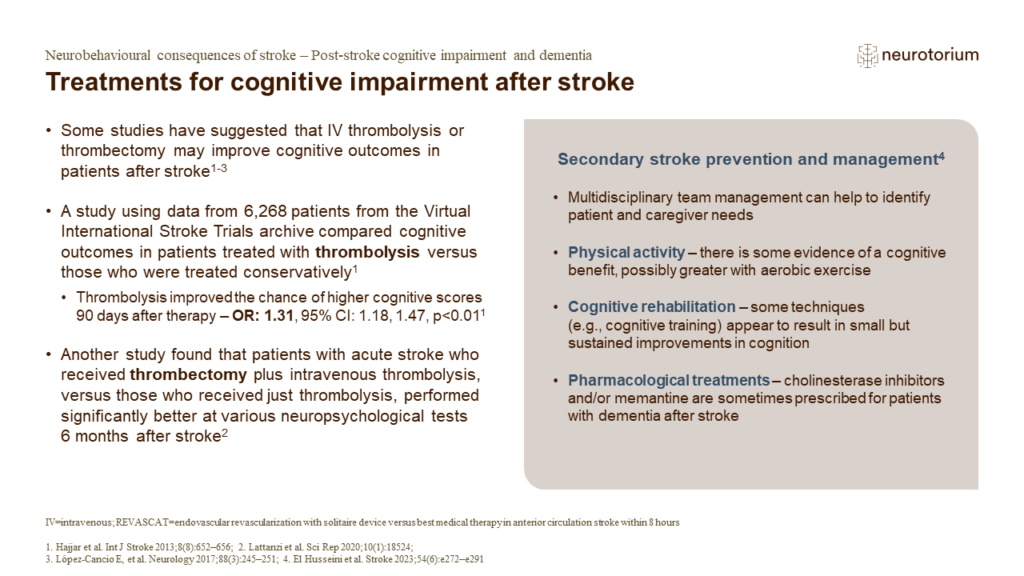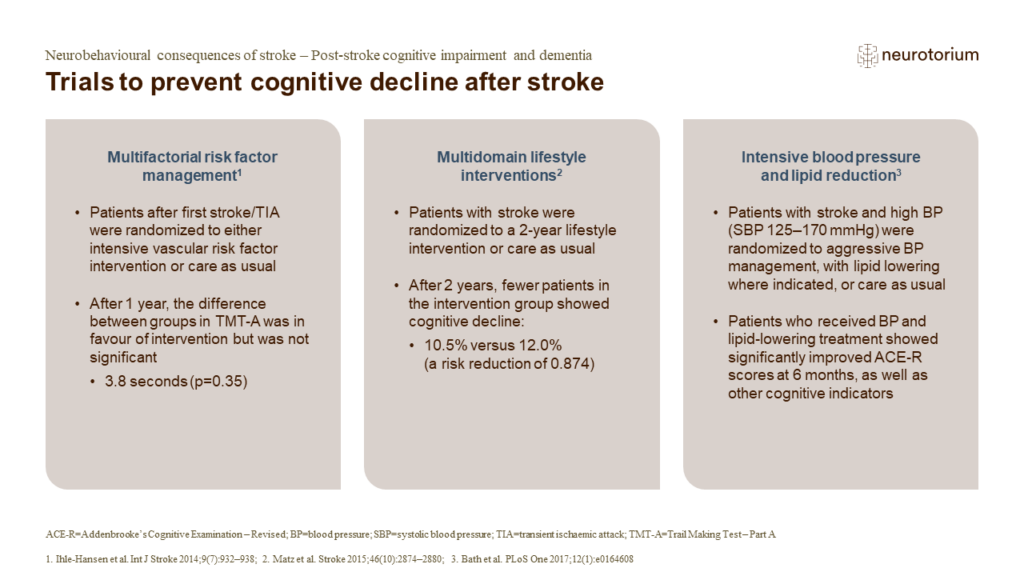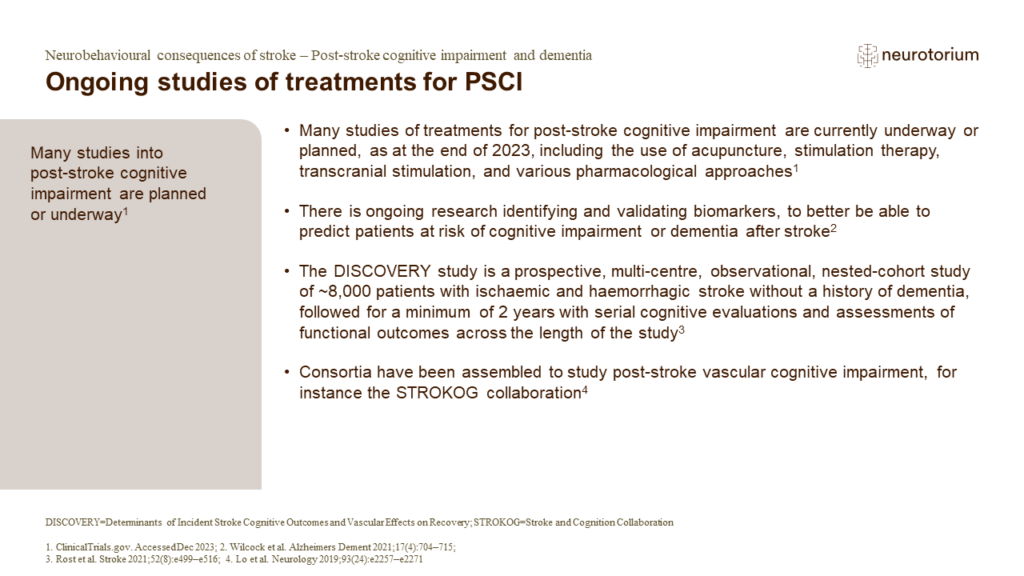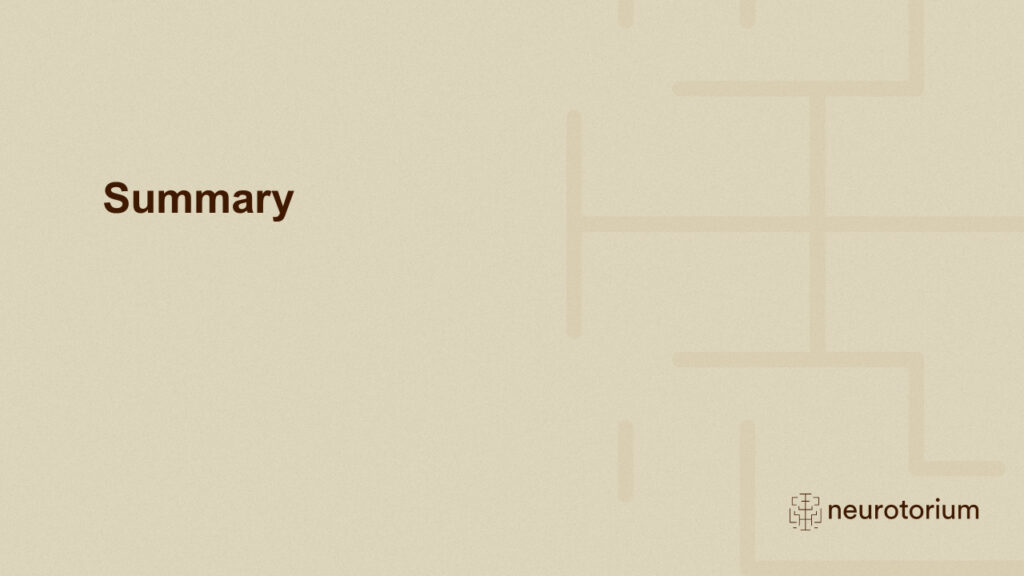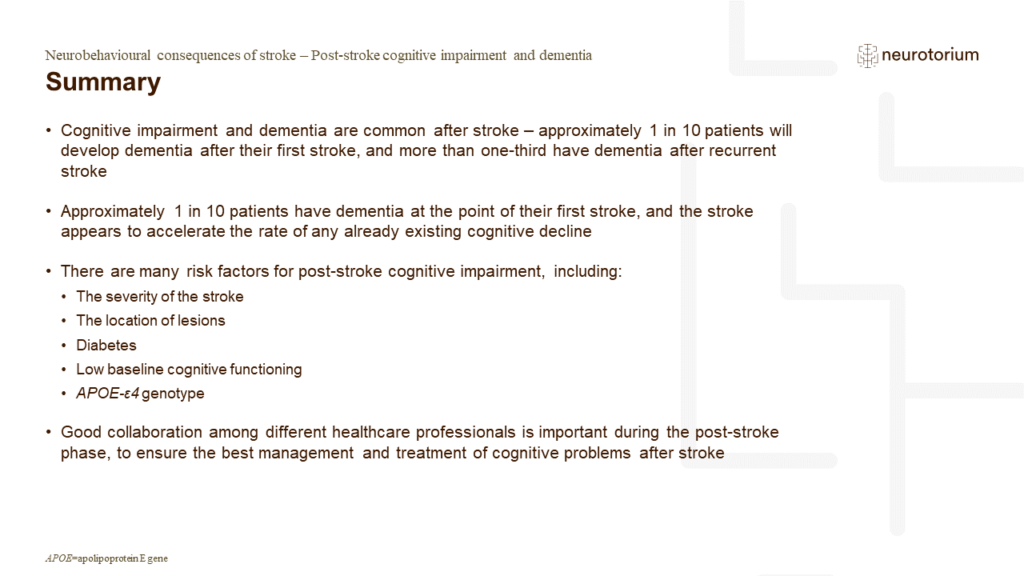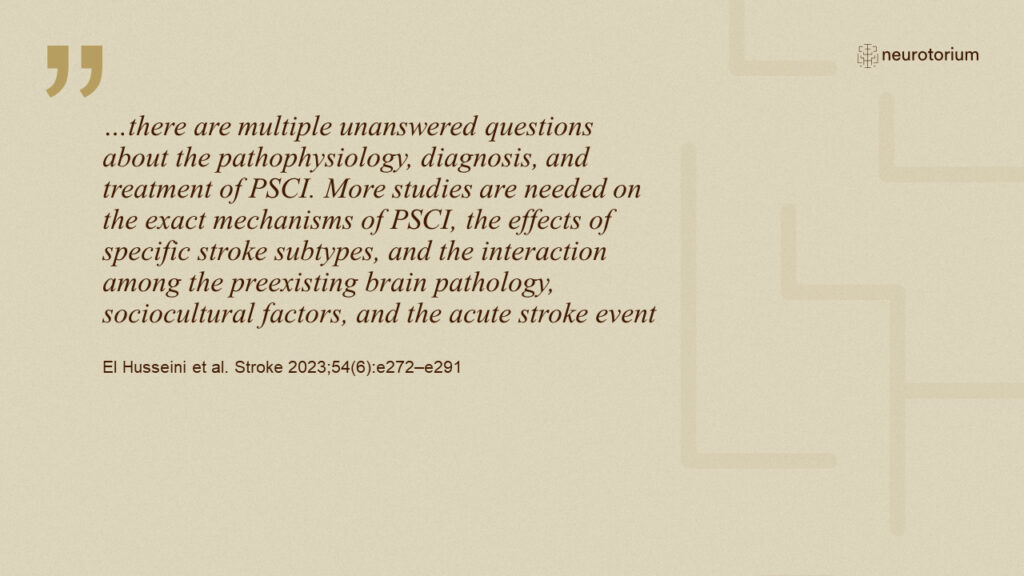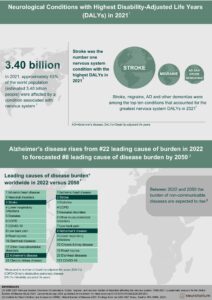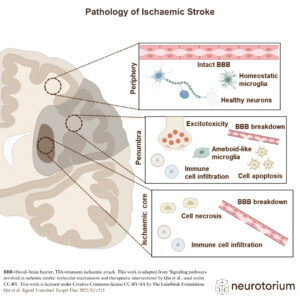Index for
slide deck
Introduction

Post-stroke cognitive impairment and dementia
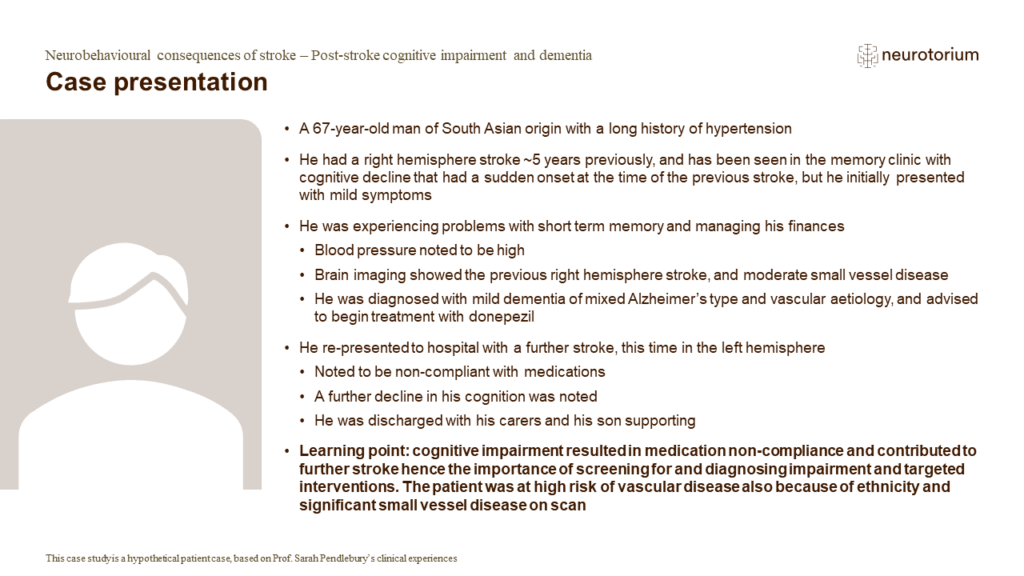
Case presentation
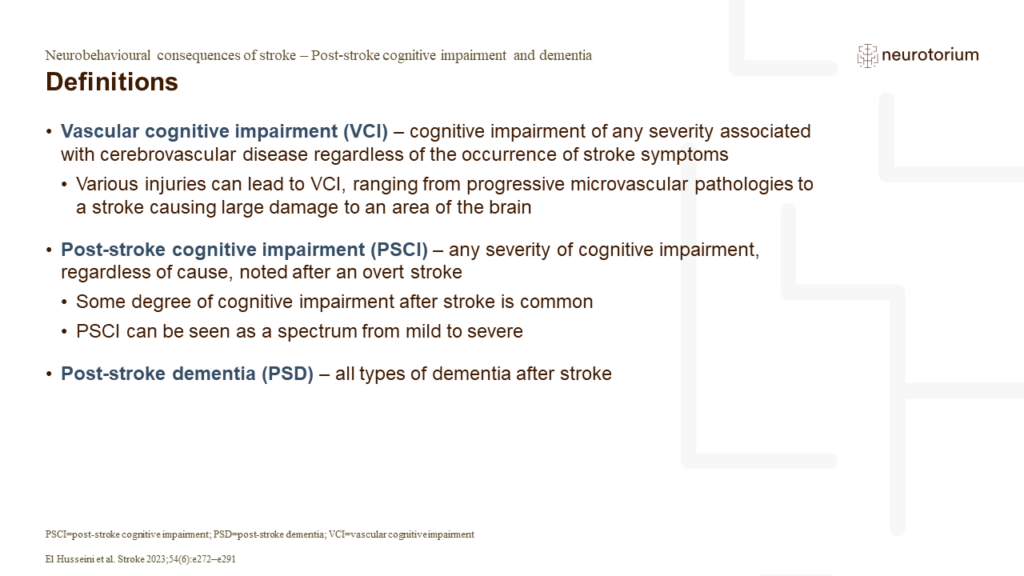
Definitions
The slide presents some key definitions of the cognitive impairment that can occur with stroke: vascular cognitive impairment (VCI), post-stroke cognitive impairment (PSCI), and post-stroke dementia (PSD), taken from a consensus statement from the American Heart Associati…
Epidemiology of post-stroke cognitive impairment and dementia
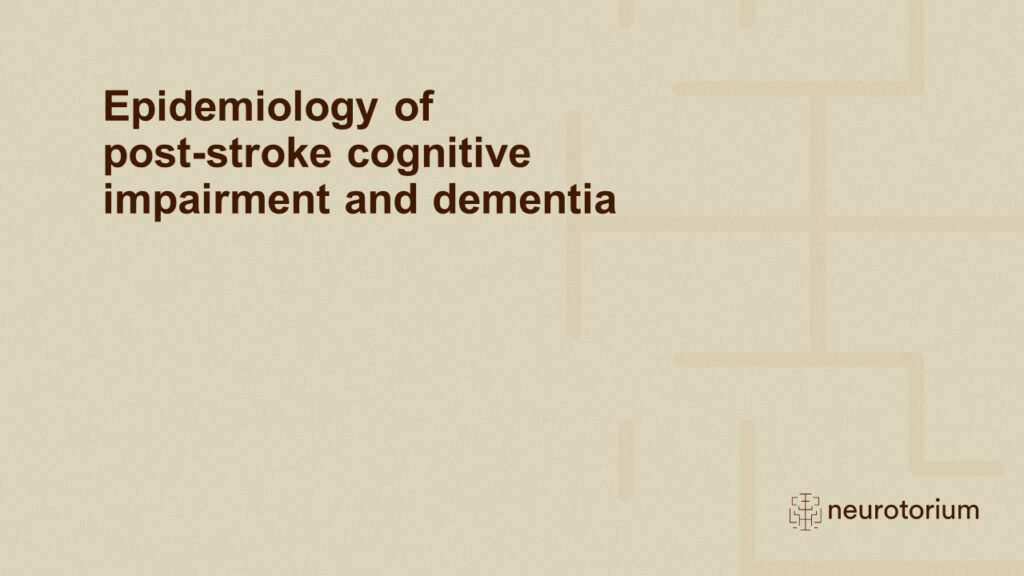
Epidemiology of post-stroke cognitive impairment and dementia
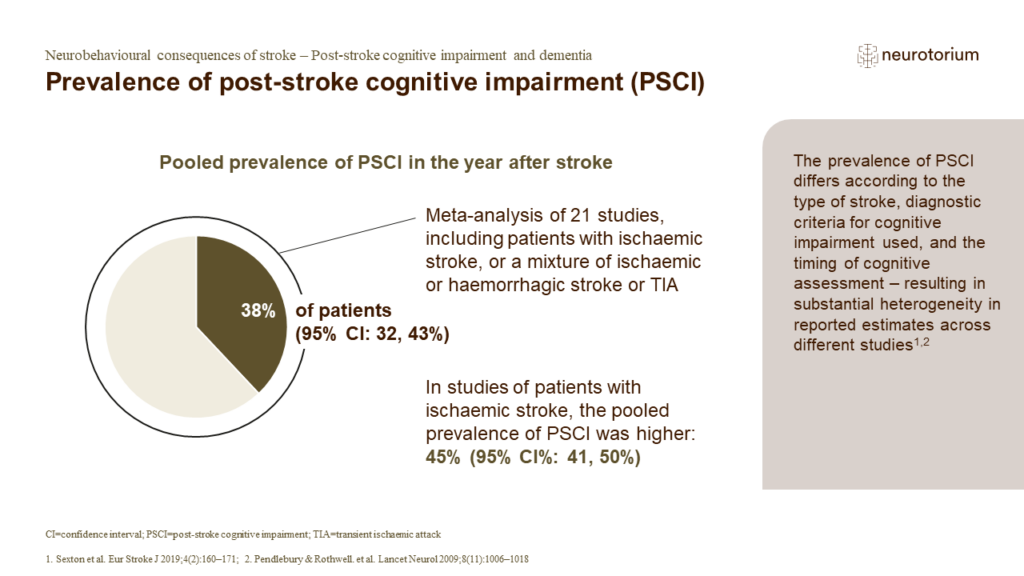
Prevalence of post-stroke cognitive impairment (PSCI)
In this meta-analysis, which took data from 21 studies, the prevalence of cognitive impairment but not dementia in the year after stroke ranged from 17.5–54.9%.1 The pooled prevalence in this study was 38%; in other words, approximately four patients out of every ten will…
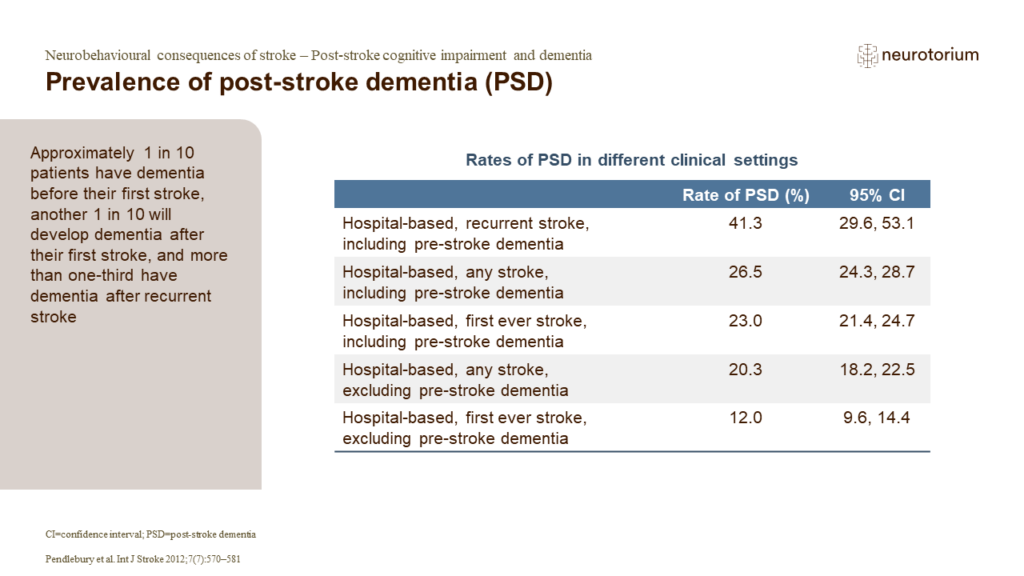
Prevalence of post-stroke dementia (PSD)
As shown on the slide, the rates of dementia in the first year after stroke ranged as high as 41.3% (in hospital-based studies of recurrent stroke in which pre-stroke dementia was included).1 The factors associated with dementia after stroke are similar to those associate…
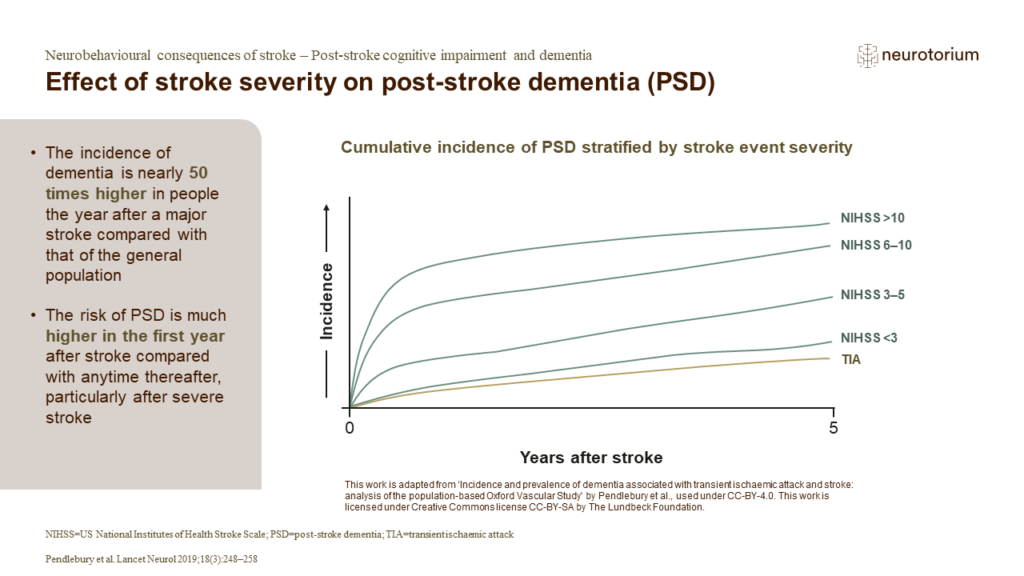
Effect of stroke severity on post-stroke dementia (PSD)
The Oxford Vascular Study was a prospective study which recruited 92,728 people between 2002–2012, living in Oxford, UK, and followed them for up to 10 years.1 Among the sample, 1,617 experienced a stroke and 688 experienced transient ischaemic attack, and were included i…
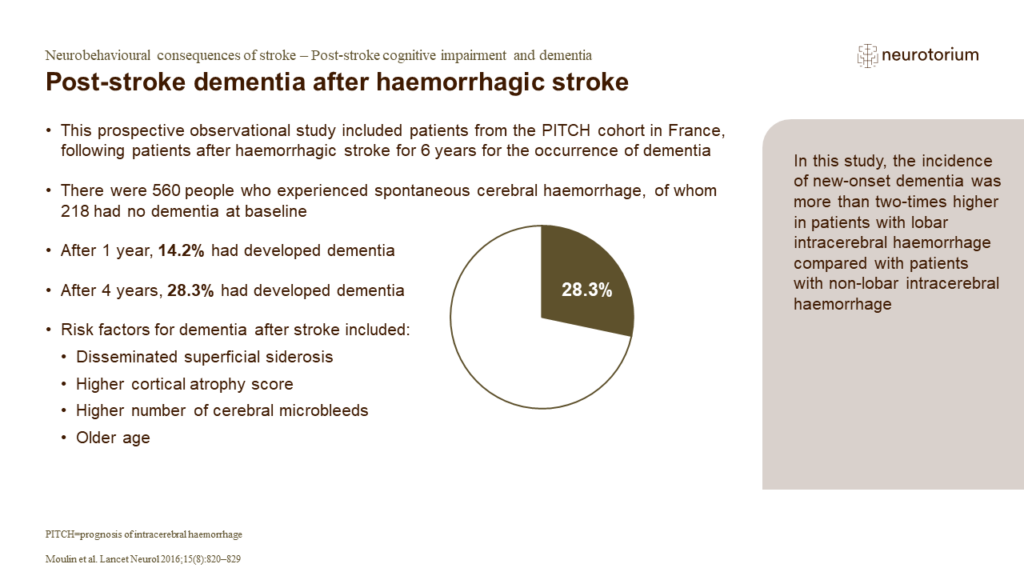
Post-stroke dementia after haemorrhagic stroke
This study was undertaken because there was a lack of good evidence about the risk of dementia after haemorrhagic stroke.1 Patients from the Prognosis of Intracerebral Haemorrhage (PITCH) cohort were included in the study if they were aged ≥18 years and older and had a pa…
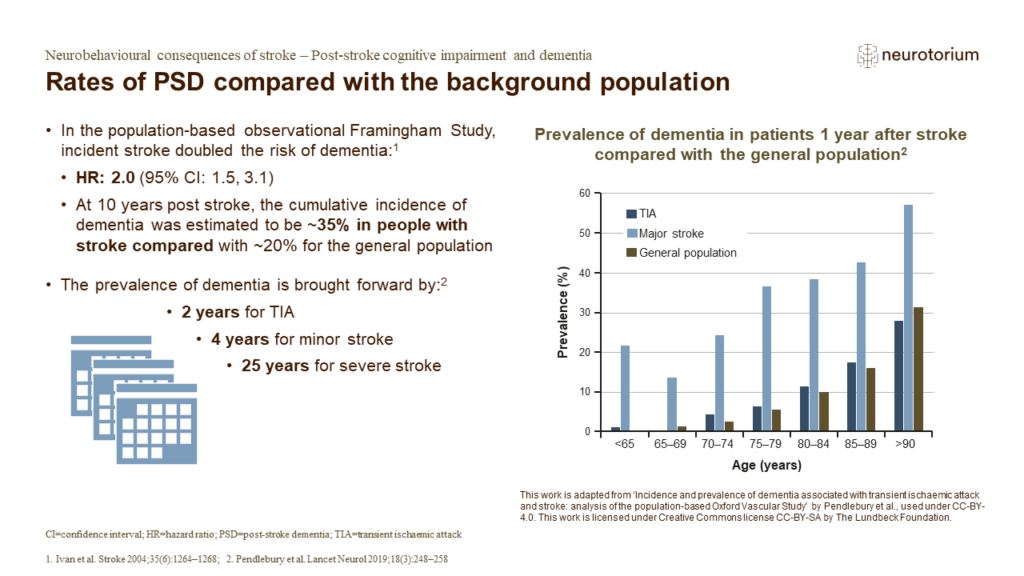
Rates of PSD compared with the background population
The Framingham study is an observational study that began monitoring people for incident stroke in the 1950s.1 The subset of patients used for the analysis presented on the slide included 212 people who were dementia free in 1982, experienced a stroke after this date, and…
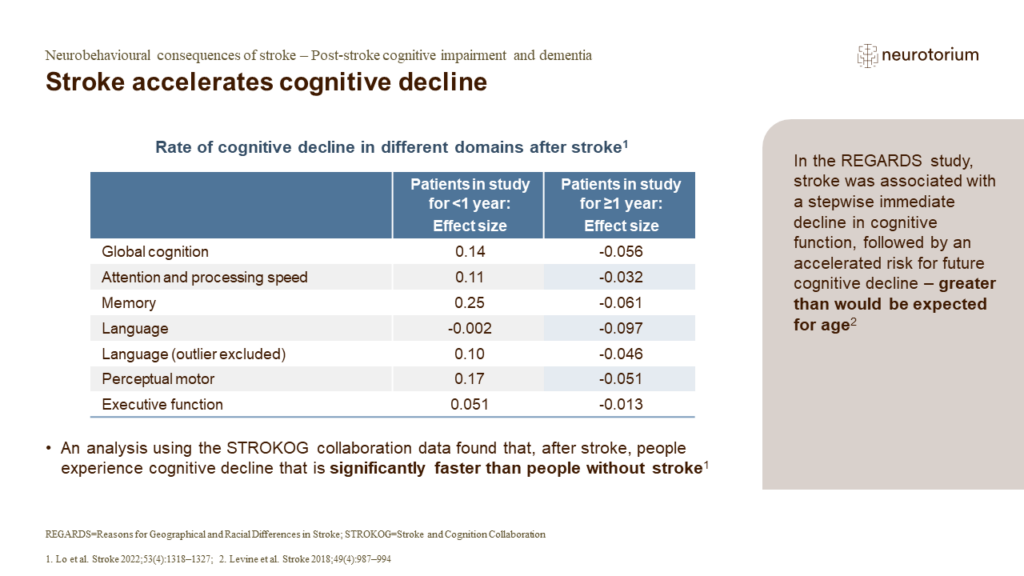
Stroke accelerates cognitive decline
Stroke appears to accelerate the rate of cognitive decline.1,2 In the ‘reasons for geographic and racial differences in stroke’ (REGARDS) study, 22,875 people without baseline cognitive impairment were followed, and stroke was associated with declines in global cognition,…
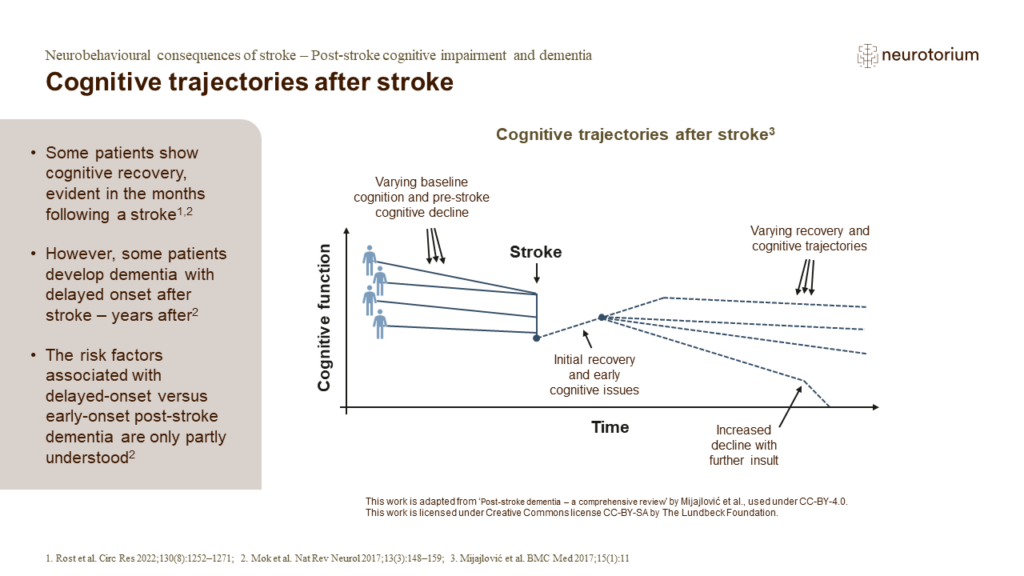
Cognitive trajectories after stroke
As shown on the slide, there are different paths of recovery that a patient can take after a stroke, which range from some degree of cognitive recovery to a steep decline and recurrent strokes.1,3 Patients can show some early recovery,1-3 but this is reduced in patients w…



